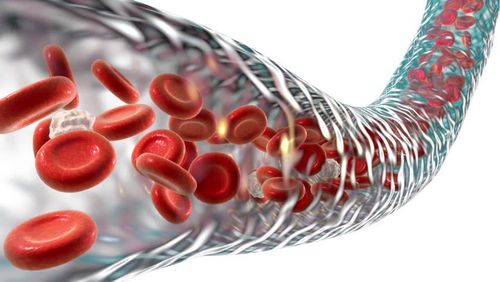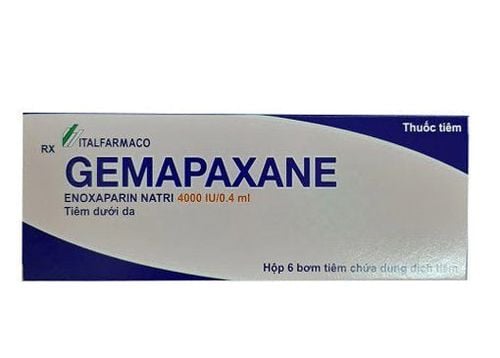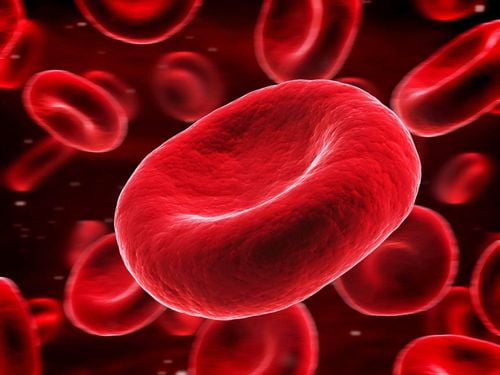This is an automatically translated article.
The article was professionally consulted by Pharmacist Ngo Thi Thu Thuy - Dean and Pharmacist Nguyen Hoang Phuong Khanh - Faculty of Pharmacy - Vinmec Central Park International General Hospital.The body is said to be anemic when the normal hemoglobin is less than 13g/100ml in men and less than 12g/100ml in women. Once an accurate diagnosis of the level and status of anemia in the patient is made, the doctor can make a treatment plan and use the appropriate erythropoiesis-stimulating drug.
1. What is anemia?
According to the World Health Organization (WHO), anemia is a condition in which the body has a decrease in the number of red blood cells (red blood cells) or the amount of hemoglobin (hemoglobin) or both. The oxygen carrying capacity of these cells is reduced, so it is not enough to meet physiological needs. Physiological needs vary with age, sex, altitude, smoking and pregnancy status. When anemic, patients often feel tired, short of breath, dizzy.... If anemia is prolonged and severe, it will affect other organs such as cardiovascular, genital, endocrine, nervous system. economy... and reduce quality of life.To diagnose and determine the cause of anemia, in addition to direct clinical examination, doctors will do additional tests:
Complete blood count (CBC): For anemia blood, the doctor will be interested in the hematocrit (hct) and hemoglobin (hemoglobin or Hb) in the patient's blood. In adults, the normal hemmatocrit is between 42%-54% for men and 38-46% for women; similarly, normal hemoglobin values also vary with age and sex, ranging from 14-18 gm/dL (men) and 12-16 gm/dL (women) Tests to identify abnormalities if present about the size, shape, and color of your red blood cells Some other special tests (eg, a myelogram or a stool test).
2. Causes of anemia
Red blood cells are produced in the bone marrow and the soft fatty tissues inside the bone cavities. The rate of production of blood cells in general as well as red blood cells in particular is controlled by the body's needs. Normal red blood cells last for a limited time (about 120 days) and must be replaced constantly. When oxygen levels in the body tissues are low or the red blood cell count is reduced, the kidneys produce and release erythropoietin (EPO), a hormone that stimulates the bone marrow to make more red blood cells, which is an essential hormone. For the formation of red blood cells from erythroid tissues in the bone marrow, most Erythropoietin is produced by the kidneys in response to tissue hypoxia and about 10% is synthesized by the liver.
There are many causes of anemia but most can be divided into three main mechanisms:
Anemia due to blood loss (excessive bleeding) Anemia due to excessive destruction of red blood cells Anemia due to blood production decreased or defective red blood cell production.

Sử dụng thuốc điều trị gây nên thiếu máu
Common causes of anemia:
Chronic bleeding Bladder and kidney tumors Gastrointestinal cancer Heavy menstrual bleeding Hemorrhoids Polyps in the digestive tract Stomach and small bowel ulcers Surgical bleeding , injury Decreased red blood cell production:
Increased destruction of red blood cells:
Autoimmune response against red blood cells Glucose-6-phosphate dehydrogenase (G6PD) deficiency Sickle cell disease Thalassemia.
3. Treatment of anemia with erythropoiesis-stimulating drugs
As mentioned above, Erythropoietin is a hormone that stimulates erythropoiesis,
Since 1983, thanks to genetic engineering, pharmaceutical companies have produced erythropoietin like natural human erythropoietin. and called recombinant human erythropoietin (rHuEPO for short). This is really a revolution in the treatment of anemia caused by chronic renal failure and the treatment method to replace endogenous erythropoietin with erythropoietin-stimulating agents (ESAs for short) was initiated and developed. Currently, there are 3 groups of ESAs used to treat anemia caused by chronic renal failure:
Short-acting ESAs: EPO alpha (eprex, epogen, epokin) and EPO beta (neorecormon). Injection interval: 2-3 times/week. Moderate-acting ESA: Darbepoetin alpha - Aranesp. Injection interval 1-2 times/2 weeks. Long-acting ESA: Mircera. The injection interval is 1 time / 4 weeks. Erythropoietin drugs are indicated for use in patients with anemia in chronic renal failure in pediatric and adult patients on hemodialysis, peritoneal dialysis, or anemia due to other causes such as HIV infection, anemia caused by chemotherapy for non-myeloid cancer, mild-moderate myelodysplasia in adults, facilitates preoperative autologous blood collection & reduces the risk of allogeneic blood transfusion.
Erythropoietin drugs are contraindicated in cases of drug hypersensitivity, uncontrolled hypertension and aplastic erythroblasts
Special caution should be exercised in patients at risk of hypertension and thrombosis. vascular disease, history of epilepsy, gout, porphyria.
When using erythropoietin drugs, patients may experience some side effects such as: nausea, diarrhea, vomiting; chills, flu-like illness, injection site reactions, fever, peripheral edema; hyperkalemia; joint pain, bone pain, muscle pain, pain in the extremities; convulsions, headache; cough, airway obstruction; rash; thrombosis and embolism, deep vein thrombosis, thrombosis, hypertension.

Dung thuốc erythropoietin gây tác dụng phụ như đau đầu, ớn lạnh
Please dial HOTLINE for more information or register for an appointment HERE. Download MyVinmec app to make appointments faster and to manage your bookings easily.













